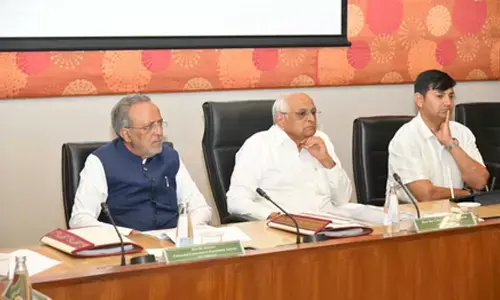Robot dexterity will be a game changer for the world

Robot dexterity will be a game changer for the world
It will make robots work like human beings; AI, big data and computer vision tech hold the key
"Hasta La Vista baby." Nobody can say this dialogue better than Arnold Schwarzenegger in the movie 'Terminator 2'. This
AI-based robot, played by Arnold, continuously observes the young and cool John, the human he is supposed to protect. The Terminator picks up this line from
the boy's lingo. That was true 'machine learning' displayed in real-time.
The Robots we see in movies can walk, talk and move almost like humans. However, the ground reality is far from it. They can perform most tasks under pre-set environments but falter under uncontrolled and real-time conditions. In the same way, they are fantastic at doing impossible and complex things while they falter at regular everyday human tasks.
For instance, robots can precisely cut a bone for knee joint replacement surgery but fail at opening a door lock. In the same way, they can beat a Grandmaster at chess but struggle to achieve the agility of a two-year-old such as grabbing a pencil from a random pile of office supplies.
The key reason is "dexterity in robots", as technology has not arrived yet. Not to lose heart on that, giant strides are happening in this domain as we speak. Artificial Intelligence, big data and computer vision technologies have started to contribute to the advancement of robot dexterity. Extensive research is going on to improve this area.
Scientists are leveraging a technique called reinforcement learning. Reinforcement learning is a type of machine learning method which improves the algorithm using the hits and misses in simulation. This will enhance the motor skills of the robot as the algorithm learns the best technique to handle objects. In essence, they teach themselves to manage the physical world.
One such project is Dactyl, a robot that taught itself to flip a small toy block in its palm with its fingers. The project was run by OpenAI, a non-profit founded by the tech billionaire Elon Musk. Dactyl uses an off-the-shelf robot hand with lights and cameras around it. The AI software controlling this robot first learns how to grasp and turn the block around in a virtual environment by trying various permutations and combinations. Later, it tries it out in the real world. Usually, it is difficult to transfer such virtual learning into the real world because of unpredictable properties like friction. The OpenAI team got around this by adding randomness to the virtual training, giving the robot a proxy for the complexity of reality.
The goalpost for robotic dexterity changes based on who you talk to and its related application. However, one can ponder the following broad factor variations based on what the robot can handle.
Object size
Object shape
Gripping strategy
Reachability
Speed
All these factors are interrelated. One factor in isolation does not necessarily define the robot as "dexterous," but together, they give a broad picture.
While AI and autonomous cars dominate the headlines, another breakthrough technology - robot dexterity - is likely to have an even more significant impact in both business and everyday life.
"Robot manipulation is the next shoe to drop," says Dr Robert Platt, a computer science professor at Northeastern University. "Imagine a robot that can do things with its hands in the real world- anything from defusing a bomb to doing your laundry".
(The author is Chairman
and CEO of Hyderabad-based Brightcom Group)














